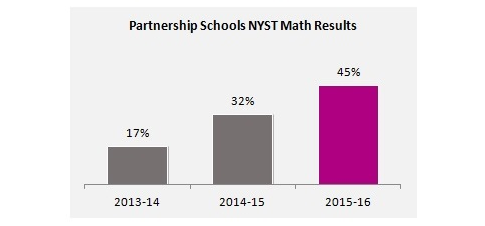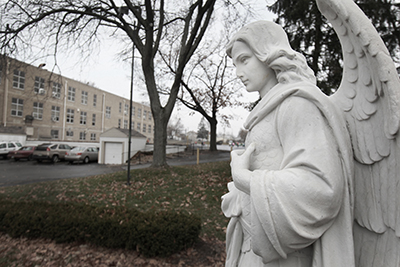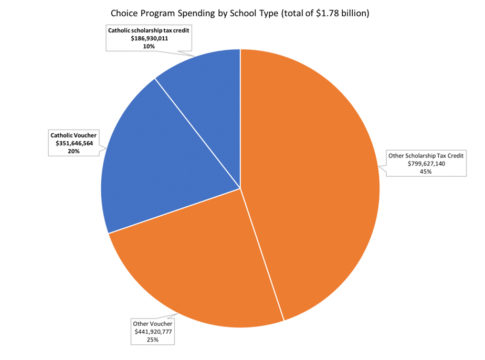A story in the October 12 issue of Time Magazine, for which I once worked, on the “crisis” in Catholic schools, brought me back to a question I have been asking myself for several months: what’s the connection between the health of Catholic schools and the health of the Catholic church? And should we be asking that question instead of the ones that most journalists are asking about the imploding Catholic school system?
Time’s writer, Gilbert Cruz, does an admirable job describing the problems facing the world’s largest private school system, and identifies most of the usual suspects – disappearing nuns and priests (cheap labor), changing demographics (the flight of Catholic parish money from the inner cities), and, of course, an outdated business model. (I found many of the same things in researching my stories on Catholic education for Education Next and the Thomas B. Fordham Foundation.)
Cruz does misunderstand the significance of the charter school threat – and Sol Stern does an admirable job of explaining the danger of “public school reform schemes” in his blog – but for the most part Cruz avoids the elephant in the room: THE Catholic Church. What is the official Church doing to save its schools?
I don’t doubt for a moment that many Catholics are worried – and many are working hard to “save” their schools and “the system.” And Cruz, like others, talks about the various experiments (like the Jesuits’ Cristo Rey network and the conversion of parish schools to charters – see Andy Smarick’s comprehensive report for Seton Education Partners about Washington, DC’s experience), but doesn’t he wonder where the Church’s bishops are? Yes, there are a few, like J. Terry Steib of Memphis, who have taken up the cause of inner-city poverty and education, but their efforts are a tiny blip in the American Catholic world. The occasional bishop or cardinal will lobby “the state” for a tax credit, but you don’t hear much from the United States Conference of Catholic Bishops.
Does all this sound familiar– a very powerful education establishment overseeing a system that is crumbling; lots of small reforms, around the edges? The American public education system, by most accounts, is broken, despite taxpayers throwing billions of dollars at it. And the American Catholic school system is disappearing, despite the fact that the number of Catholics has nearly doubled (from 45 million to 77 million) since 1965.
The similarities in plight are not incidental, despite the supposed high wall between church and state. And we know that there have been terrific battles about how high and real that wall is. In fact, the Catholic school system was launched by prelates worried that the public system had been overtaken by Protestants – and was out to get them. They weren’t wrong. John Dewey pronounced the Catholic church “inimical to democracy,” many states outlawed Catholic schools and it took a Supreme Court decision, in 1925, Pierce v. The Society of Sisters, to declare unconstitutional an Oregon law that required public school attendance (a law meant to keep Catholic children out of Catholic schools).
All of this leads one to the not very remarkable conclusion that there’s something in the air that’s not quite Catholic and not quite secular that is perhaps causing our schooling malaise. My own theory is that the Church and the state – their leaders and a good many of their followers – have simply lost faith. Catholics really don’t believe in God and secularists are no longer very sure about democracy. It’s no wonder that neither believe that schools are the way, the truth, and the light: we’ve given up on our ability to know. We no longer build shining cities of learning on hills – by hand, with sweat, toil and tears; we build big-box stores on flat land and call them schools. (See Martha Derthick’s “The Decline of the Stately School.”) As a nation – and this is as much a problem with Catholic educators as their secular counterparts – we have grown comfortable looking the other way in the face of certain realities (we prefer reality TV). We claim, for example, that Catholic schools are disappearing because of inner city poverty, forgetting that the people who built the Catholic education system were impoverished immigrants. We mourn the loss of nuns, without giving much thought to the character of the institution that they were part of – or the institutions that their replacements come from.
There is, in both spheres, a severe identity crisis. Or to see it another way, we have all succumbed somewhat to the religion of relativism, expressed in so many fifth-grade classes today (Catholic and public), by the odd phenomenon of giving Gold Stars to everyone. Without striving for “truth” or God, we are left with nothing more to aspire to than getting a job, which all depends, as we know, on who you know, not what you know.
One need not be a cynic to see the intellectual mush that this educational anarchy has created. In one issue of a recent New York Times (August 30, 2009) there were two stories (one on page 1 and the other page WK1) about the new trends in letting children read–and eat–whatever they want.
No wonder there is a new movement for national standards. Standards, please! Is there an adult in the house? Is Lord of the Flies on any reading list?
E.D. Hirsch has just written yet another book attuned to the educational temper – or distemper! – of our times. This one, The Making of Americans: Democracy and Our Schools, is about why a core curriculum is needed for the preservation of our republic – a republic, madam, if you can keep it. “Our educational thinkers in the eighteenth and nineteenth centuries saw the schools as the central and main hope for the preservation of democratic ideals and the endurance of the nation as a republic,” writes Hirsch. And he quotes the master seer of American identity, Mr. deTocqueville, who observed (in 1831!) that “It cannot be doubted that in the United States the education of the people powerfully contributes to the maintenance of the democratic republic.”
So too Catholics, it would seem, have forgotten the necessity of schools to the health of their faith – a faith, madam, if you can keep it. When the Church was fighting to find its place in that new republic, it, too, turned to schools as the vehicle for ensuring its future. The Bishops who convened at the Third Plenary Council of Baltimore in 1884 determined to write a catechism for Catholic children – the famous Baltimore Catechism, which was a standard text in Catholic schools for the next 80 years, its questions and answers about the Church and God learned, by rote, by millions of children, in a fashion that might put Muslim madrassas to shame – and then issued what today would be considered a terribly draconian and medieval (parochial?) order: “All Catholic parents are bound to send their children to the parochial schools.” Such schools were not even built yet, so the Council, in the words of the National Catholic Education Association, issued “a demand that all Catholic parishes open schools within two years.” Hup-two!
Though some will disagree about whether immigrants made the American Catholic Church or the American Catholic Church made the immigrants, the 1884 decisions by the Bishops stand as the foundational documents of a school system that so prospered that, by 1965, it was educating one of every eight children in the United States. The question is – and this is the question behind Hirsch’s plea to revive a core curriculum in public schools – can the Church survive without its schools? Just as the crisis in our public school system may be one tied to a deeper dysfunction in our culture that only a shared and common knowledge base can resolve, so too the Catholic school crisis may need to be solved by Catholics asking themselves what it is they believe.
Though loss of nuns, changing demographics, and lack of funds are the most common explanations for the Catholic school system’s dissolution, and are important to consider, I think we can also find answers to the current crisis by understanding the lessons of 1884.
It could be that the crisis in the Catholic school system is what political observers call “the God Gap.” Our public schools are constantly faced with the question of whether and how to teach God–is character education a suitable replacement?–but it could very well be that Catholics are struggling to understand whether God had anything to do with the success of their school system and whether they can get by without Him.
Church and state? It does look like we’re in this together after all.





